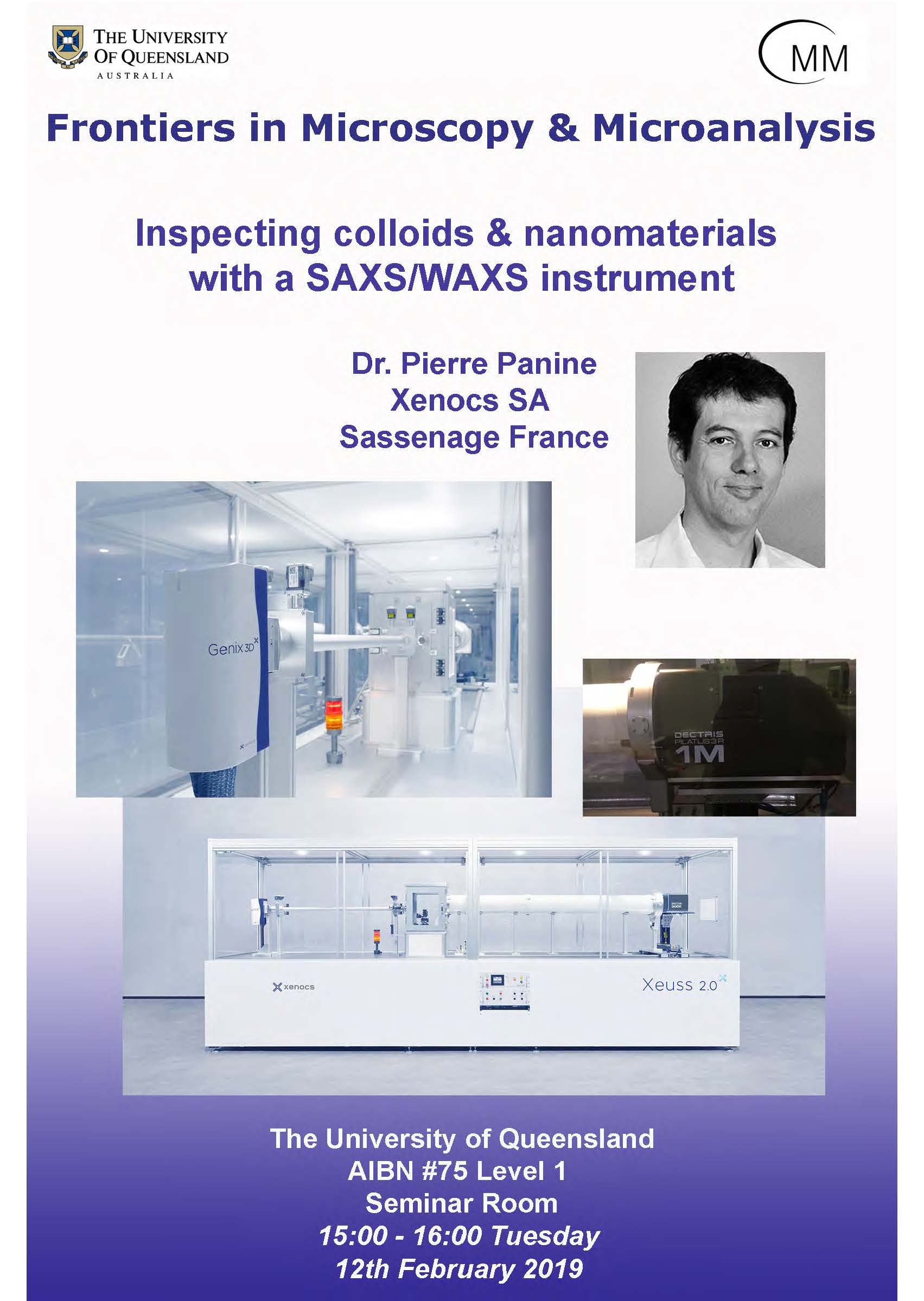A seminar and special classroom lecture on small-angle X-ray scattering (SAXS), presented by Dr Pierre Panine.
Pierre is an instrument scientist with Xenocs, manufacturers of the Xeuss 2.0 laboratory beamline recently installed at the CMM, and has extensive scattering experience, including time as a beamline scientist at the ESRF.
During his time with us, Pierre will give a general introduction to SAXS together with some examples from his own research on Tuesday, and then will present a classroom session on more detailed theory and practice of small-angle X-ray scattering on Wednesday morning. We encourage anyone with an interest in scattering to attend and learn from his experience.
Seminar: Inspecting colloids and nanomaterials with a SAXS/WAXS instrument
Date: Tuesday 12th February
Venue: AIBN # 75, Level 1 Seminar Room
Time: 3 am to 4 pm
Practical lecture: SAXS/WAXS theory and application
Date: Wednesday 13th February
Venue: Chemistry #68, Room 306
Time: 9 am to 11 am
Places in the classroom session will be limited.
Please RSVP as soon as possible to Kevin Jack (k.jack@uq.edu.au) or Lachlan Casey (l.casey1@uq.edu.au) to ensure space is available.
Abstract:
Colloidal materials hold major expectations in a vast range of industries (paint, cosmetic, detergents, agriculture, food…) but understanding their properties requires the investigation of a large number of compositions or process combinations. In turn, this necessitates characterization requirements over broad length scales and experimental conditions. Moreover these materials require control and understanding of their morphology, both for fundamental studies or for routine quality verification.
Small Angle X-ray Scattering (SAXS) is a powerful characterization method for investigating colloidal suspensions. SAXS not only provides size information in the range from 1 nm to beyond 150 nm but also provides deeper knowledge such as particle-particle interactions (repulsion, attraction), formation of dimers, trimers… Furthermore, mesoscale phase identification, internal structures of more complex colloidal objects as such as cuboids or nanorattles (fig. 1) can be revealed and characterized. The method requires little sample preparation, is non-destructive and, in contrast to microscopy, probes a large volume of the sample enabling a statistically meaningful result. Moreover, the same technique can be applied to surface only in the so-called “grazing incidence geometry”. When combined with Wide Angle X-ray Scattering (WAXS) one can also get information on crystalline structure. Major developments in components and subassemblies achieved the past years, offer capabilities for fast routine measurements, screening process parameters or samples. Most of the time such experiment can be conducted with sample maintained in normal atmospheric conditions, without further preparation, enabling a simplified access to the nanostructure information. Hence, in contrast to microscopy techniques, wet or solvent containing samples can then be easily studied. This presentation will summarize latest results of Xenocs developments applied to colloidal science, emphasizing impact of data analysis and related interpretation for nanoparticles, colloids and nanomaterials characterization. SAXS/WAXS also being useful in a very large number of applications not directly connected to particle shape and sizing, the remainder of the talk will be devoted to a more general description of topics that can be addressed by scattering, both in terms of operating conditions (temperature, mechanical stress…) as well as data interpretation.




